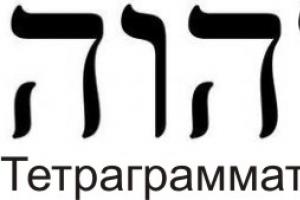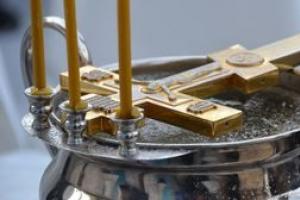Rules fire safety when operating furnaces
Wood materials ignite when heated to a temperature of 300°C, but if for a long time they come into contact with objects that are heated even to 100°C, they acquire the properties of spontaneous combustion. Therefore, when constructing furnaces, care must be taken to ensure that the heated surfaces of the furnaces and smoke ducts are not adjacent to combustible parts of the building. The main fire safety requirement: wooden or other flammable parts of buildings must be kept at a great distance from the hot parts of the stove and smoke ducts or be very well insulated.
 The main danger is represented by cracks that form in smoke channels or in the stove mass due to uneven crumbling of the clay mortar from the seams due to the action high temperature. Ignition of soot that accumulates in smoke ducts in large quantities, may also cause a fire. For insulation, fireproof materials or red brick with low thermal conductivity, felt, and asbestos in the form of cords and sheets are used. Felt, which is usually made 5 mm thick, conducts heat very poorly and acts as an excellent heat-insulating material. When a fire occurs, it smolders and a suffocating, acrid odor notifies of the occurrence of a fire. It is impregnated with clay mortar before installation to make it more resistant to fire.
The main danger is represented by cracks that form in smoke channels or in the stove mass due to uneven crumbling of the clay mortar from the seams due to the action high temperature. Ignition of soot that accumulates in smoke ducts in large quantities, may also cause a fire. For insulation, fireproof materials or red brick with low thermal conductivity, felt, and asbestos in the form of cords and sheets are used. Felt, which is usually made 5 mm thick, conducts heat very poorly and acts as an excellent heat-insulating material. When a fire occurs, it smolders and a suffocating, acrid odor notifies of the occurrence of a fire. It is impregnated with clay mortar before installation to make it more resistant to fire.
If you are placing thick-walled heat-capacity stoves on a combustible base, then the shortest distance from the floor level of the house to the bottom of the ash pan should be more than 140 mm, and to the bottom of the smoke ducts should be more than 210 mm. When laying a heat-intensive thick-walled stove on a fireproof base, all smoke ducts and the bottom of the ash pan can be laid out freely at floor level. And in this case, from the floor of the dwelling to the bottom of the last smoke circulation, the minimum distance should be more than 140 mm, and to the bottom of the rest - more than 210 mm.
Wooden or other fireproof floor surfaces that are located under thin-walled frame stoves and kitchen stoves with metal legs, insulated with 12 mm thick asbestos cardboard and covered with steel for the roof. Under metal stoves, which are made of roofing or sheet steel, as well as cast iron, the floors are insulated with two rows of bricks, which are laid on a double layer of felt impregnated with clay mortar.
Under the fire door, the floor is covered with a sheet of metal measuring 500x700 mm, which protects it and the baseboard located near the stove wall from fire.
When installing a stove, leave an indentation more than 130 mm wide (to be laid brickwork) between partitions and combustible partitions or in an opening wooden wall.
The wooden structure is carefully insulated with felt or asbestos, which must be impregnated with a clay solution. From inner surface The minimum distance between the nearest stove smoke duct and wood should be more than 250 mm (1 brick). The width of the groove is equal to the thickness of the building partition or adjacent wall. When adjacent to fireproof or brick walls, the width and thickness of the groove is equal to 0.5 bricks. When constructing a chimney or stove near a wooden wall or partition of a building, in all cases a free air gap (recess) is left to the height of the chimney or stove. Combustible partitions and walls are insulated in a retreat with asbestos or felt in two layers, which is wiped with a clay solution, followed by iron upholstery for the roof. The setback can be closed or open on both sides or on one side with brick (other fire-resistant material can be used).  When installing a closed setback from the sides, it is sealed with brick walls half a brick thick. For an open setback, the total thickness is arranged in such a way that the distance from the inner surface of the smoke ducts to the wall or partition made of wood is more than 250 mm. If the setback is covered with bricks on both sides, then it is covered in 2 rows with bricks or other fire-resistant material. Closed camera, which has formed at the top or bottom, is provided with ventilation grilles for air circulation. The cross-sectional area of each grating must be at least 150 cm2.
When installing a closed setback from the sides, it is sealed with brick walls half a brick thick. For an open setback, the total thickness is arranged in such a way that the distance from the inner surface of the smoke ducts to the wall or partition made of wood is more than 250 mm. If the setback is covered with bricks on both sides, then it is covered in 2 rows with bricks or other fire-resistant material. Closed camera, which has formed at the top or bottom, is provided with ventilation grilles for air circulation. The cross-sectional area of each grating must be at least 150 cm2.
Open offset width for heating stoves long burning must be more than 260 mm. In the retreat, the wooden walls are plastered with plaster lime mortar, the thickness of which should be 25 mm. When constructing a closed retreat for stoves, the walls of which are half a brick, and with a fire duration of more than 2 hours, the wooden wall of the building is protected from fire by lining it with 0.5 bricks.
For stoves whose walls are a quarter brick thick, use an indentation that is open on both sides. The distance between the combustible wall or partition of the building and the stove must be more than 320 mm. Non-heat-intensive stoves are left open. The distance between the combustible wall of the building and a metal stove without lining should be 1 m. For non-heat-intensive stoves that are lined from the inside with fireclay slabs or bricks, this distance can be reduced to 0.7 m. Recesses in all cases for heat-intensive stoves whose walls are 0. 7 m or less, left open.
In the retreat, the combustible floor is protected with one layer of brick, which lies flat, ceramic slabs or other fire-resistant materials. In the air gap, the floor should be approximately 0.7 m above the floor level in the room.
With an open retreat on one or both sides, the combustible partition or wall of the building is covered with two layers of felt, which is impregnated with clay mortar, followed by upholstery with a sheet of roofing steel or plastering. When the retreat is closed, the wooden partitions or walls of the building are protected from fire by a brick lining, which is laid over a double layer of felt, which is impregnated with clay mortar. This combustible wall insulation is usually called cold quarter because brick cladding It is the thickness of a quarter of a brick. Brick cladding is laid exclusively using clay mortar. To build a cold quarter near a wooden chopped wall, a plank board is nailed to it, then felt is upholstered in two layers, which is impregnated with clay mortar, which is used for lining with brick.
The quarters must be set back no less than the width and height of the heating stoves. A combustible wall near combustion door, which is adjacent to the stove, is covered with roofing steel over felt, which is impregnated with clay mortar, or plastered. The insulated area of the wall must be greater than the area of the fire door at the bottom and on the sides by 0.1 m, at the top - by 0.25 m. The distance from the fire door to the opposite wall must be more than 1.25 m.
The minimum distance from the top floor to the combustible ceiling for heat-intensive stoves that weigh 750 kg or less must be at least 0.45 m. If the combustible ceiling is fenced with a layer of plaster or a sheet of steel for the roof, which is nailed onto asbestos or felt in two layers , which is impregnated with clay mortar, then this distance can be reduced to 0.35 m. For heat-intensive stoves weighing more than 750 kg, the distance from the upper plane of the ceiling to the combustible ceiling should be 0.35 m, with a protected ceiling - 0.25 m.
 The minimum distance when installing non-heat-intensive stoves from the upper plane of the stove to the combustible ceiling must be exactly 1 m, and with an enclosed ceiling - no less than 0.7 m. Above the heat-intensive stove, the insulated section of the ceiling must be larger than the dimensions of the upper ceiling of the stove in all directions by 0.15 m.
The minimum distance when installing non-heat-intensive stoves from the upper plane of the stove to the combustible ceiling must be exactly 1 m, and with an enclosed ceiling - no less than 0.7 m. Above the heat-intensive stove, the insulated section of the ceiling must be larger than the dimensions of the upper ceiling of the stove in all directions by 0.15 m.
The thickness of the top floor of a heat-intensive stove must be at least three rows of brick, and in a closed space from the ceiling of the room to the top of the stove - no less than four rows. The free space above the stove is covered with decorative walls made of fire resistant materials or brick. In the walls of the enclosed space on the stove there must be two openings with grates at different levels, the cross-sectional area of each grate must be no less than 150 cm2. Special attention When laying the top floor of the stove, care is taken to properly bandage the seams, but without allowing them to coincide vertically.
In the attic and interfloor ceilings, where the combustible parts of the building adjoin the smoke ducts, horizontal and vertical cuts are provided.
Also, cuttings are arranged in places where combustible structures are adjacent to ventilation ducts, provided that they are located near smoke ducts. Around the pipes at the walls of the furnace and wall smoke ducts, horizontal grooves are made of brick or other heat-insulating materials by thickening the masonry along the entire height of the combustible coating. Between the cutting and the overlap, a gasket and felt are made in two layers, which is impregnated with a clay solution more than 20 mm thick.
When installing grooves in ceilings and floors of premises, it is necessary to structurally ensure settlement of ceilings and walls from settlement of pipes and stoves. Prohibited on structural elements overlap support cutting.
Between outer surface chimney and the wooden part of the rafters (or sheathing), the width of the free space should be no less than 130 mm. For highly flammable roofs (shingles, tar paper), the width of this space should be no less than 0.26 m. The roof in the places where the pipe passes is covered with slate, iron, roofing steel or other fireproof materials with a width of no less than 0. 5 m with their exact adjustment to the otter pipe.
In the plane of the floors, horizontal cuts are made with the main masonry of the chimney or stove at the same time. It is forbidden to bandage the masonry of vertical cuttings that are arranged at wooden partitions and walls, with the masonry of a chimney or stove. Reinforced concrete or metal beams, which are located next to smoke ducts, must be at a distance of no less than 0.13 m from the inner surface. Wooden beams that pass or are embedded in the walls of the chimney must be located at a distance of more than 0.25 m from the ducts. Their ends must be wrapped in two layers of felt, which is soaked in clay solution. If it is not possible to mount the beams while maintaining the given distance from the ventilation and smoke ducts, then install a crossbar.
The cutting of asbestos-cement chimneys in places where they are adjacent to the combustible elements of the room is carried out by creating a fireproof section of the ceiling or by widening the asbestos-cement riser.
Subject to the rules for the construction of fireplaces, stoves and baths, as well as the rules fire safety you can protect yourself when installing fireplaces open type in any season, use them at full load in accordance with the purpose of the structure, and also create favorable conditions for your life.
The wall behind the stove (more precisely, its protection) is a very important issue of fire safety. This issue is especially relevant if the house is wooden. And for good reason! After all, a negligent attitude towards such a place as the “stove wall” can lead to disastrous consequences.
To neutralize the dangerous effects from the main heater in a building on walls located close to it, various techniques are used and construction technologies. Starting from the use of protective mastics and impregnations that are used to treat the wooden surface, and ending with the arrangement of so-called “fire-retardant shields”.
In the first case, the wall near the stove retains its original appearance. Those. wooden house internally it remains so. This option will be useful when you want to preserve the image of wood in the interior. But there is one significant drawback. Over time, wood shrinks, becomes deformed and even cracks. And this leads to the formation of “weak points”. And to neutralize the possible risk of fire, the wall behind the stove requires periodic treatment wooden surface protective means.
The second option is more durable and more reliable. He suggests that insulation of the walls from the furnace is carried out by installing a fireproof shield. Let's look at this option in more detail using an example.
The easiest way is to mount a sheet of metal to the wall wooden house from the stove side. Yes - simple and fast. But this approach will clearly harm the interior of the house! In this case, decorative finishing of the wall behind the stove will be difficult. And, besides, the efficiency of such a design will not be the highest.
There are many options for arranging a shield. And here is one of them. The wall near the stove is lined with non-flammable thermal insulation to reduce the impact of hot air on the wood, and the top is covered with non-flammable sheet material to avoid ignition of the surface when coal or spark hits it. It is usually a sheet of metal (not the most the best option), fireproof GVL, SML, etc.
In the example under consideration, a glass-magnesium sheet is used. Choice in favor of this material made from price-quality ratio. Firstly, SML is non-flammable. It is able to withstand temperatures up to 1300 degrees. Secondly, when compared with fireproof gypsum fiber board in price, it is much cheaper. Thirdly, it is quite durable and reliable material. Fourthly, decorative finishing of the wall behind the stove when using LSU can be done with any material, as long as it meets fire safety requirements.
First of all, the wall behind the stove is prepared for work. We remove sawdust and other debris that is on it. This, of course, is not necessary, but it will not be superfluous.
When the frame is ready, we install thermal insulation boards into it stone wool…
 ... and sew it up with LSU sheets.
... and sew it up with LSU sheets.


 This is how the wall is insulated from the furnace by installing a “fireproof shield”. This design also meets fire safety requirements and is suitable for further decorative finishing. Most often, ceramic tiles are used for this. As a result, the wall near the stove will be fireproof and beautiful (after applying a decorative coating).
This is how the wall is insulated from the furnace by installing a “fireproof shield”. This design also meets fire safety requirements and is suitable for further decorative finishing. Most often, ceramic tiles are used for this. As a result, the wall near the stove will be fireproof and beautiful (after applying a decorative coating).
Content:
Bathhouse in summer cottage- This is wonderful. This is where you can relax after a hard week at work in the company of friends and family. But to water procedures brought only benefits and not problems, you need to think about safety in advance. The oven in the steam room can heat up to a temperature of 400°C and even higher. At the moment when the maximum temperature is reached, the stove becomes a source of radiation of infrared rays, which quickly spread throughout the entire space of the steam room and heat all surfaces, especially the wall, which is located in close proximity to the stove. And since more than 80% of bathhouses in our country are built from wood, under the influence of high temperatures the lumber begins to char, which in the future can lead to spontaneous combustion and fire.
To prevent this, various fire-resistant compounds and chemicals are used for thermal insulation. But most effective method is the creation in the bathhouse protective screens and wall cladding made of non-combustible materials.
Distance between stove and wall
In order to protect the walls of the bathhouse from the heat of the stove, it is necessary to think not only about a protective screen and wall cladding made of refractory metal, but also to maintain the distance between the heating unit and the wall and ceiling.
There is no specific distance that must be maintained. You can find out by looking at the documents that came with the stove.

But in small bathhouses, where every centimeter of space is saved, it is not always possible to follow such rules. Therefore, compact versions of stoves are often installed in private saunas. Since they are mounted close to the wall, it is important to provide protection from heat. To do this, stone screens are installed between the stove and the wall. You can also use other materials such as fiberglass, and for wall cladding - fire-resistant plasterboard, mineralite, stainless metal, etc.
Protective screens
Protective screens are a kind of insulating shields that retain and do not allow heat from the stove to pass through, and also insulate the walls from radiation in the infrared range. They are mainly used only for metal stoves.
Metal screen
Metal protective screens are the most common in our country. Metal shields are installed at a distance of one to five centimeters from the surface of the furnace. For this purpose, both front and side screens are used. They are produced at the factory using special technologies, so you won’t be able to make them at home.
The screen allows you to reduce the temperature metal surfaces 3-4 times, and such products are inexpensive, and anyone can install them, since thanks to the presence of small legs, insulating screens can be attached to the floor using, for example, anchor bolts.

There are also screens with special reflectors, which come complete with mounting frames for vertical fastening, thanks to which you will not have any difficulties during their installation.
Important! Do not forget that before installing insulation screens, you need to study them specifications and installation method. Here it is better not to improvise or experiment, since main task to ensure safety in the bathhouse, is correct installation and fixation of insulation in compliance with all norms and regulations.
Quite often, craftsmen resort to independently laying a protective screen from solid fireclay bricks, which are fireproof. There are two types of bricklaying:
- When all sides of the stove are covered with bricks. Thus, a protective casing is formed around the oven.
- When a brick wall is laid between one side of the stove and the flammable surface.
The height of the masonry should exceed the height of the upper edge of the stove by at least twenty centimeters. Experts advise laying ½ brick, so that the wall thickness is 12 cm. If the bathhouse is very small, then you can use quarter bricks, reducing the wall thickness by half. Sometimes the laying is done right up to the ceiling.
Closer to the floor (5-7 cm from the fireproof floor covering) leave small gaps for air ventilation between the protective screen and the stove. You can also install small fire doors here.

The binder for the masonry will be a solution based on refractory clay and cement. Brick insulation is not mounted flush against the walls of the furnace, but with a small gap of 50-150 mm.
If you are planning to install a protective screen made of brick, then it is important to think about this before starting construction work, since brick structures are quite heavy. Therefore, it is important to build a separate foundation for the furnace, and also to isolate it from moisture with two layers, for example, roofing felt, on top of which slabs of heat-resistant ceramics or sheets of metal 5-10 mm thick are mounted.
You need to decide in advance on the type of brick laying. For greater reliability and stability of the masonry, a reinforcing mesh can be installed every 2-3 rows.
Wall cladding made of non-combustible materials
Very often, in addition to protective screens, in order to protect the walls of the bathhouse from the heat of the stove, special sheathing made of heat-insulating materials is used.
A very effective method of thermal insulation of walls from heat and infrared rays is the combined cladding of walls made of fireproof warm insulating material A and sheet metal.
Immediately before installation, the metal sheet must be thoroughly polished to a mirror finish. This will increase the thermal characteristics several times facing material and will allow you to redirect infrared rays back into the steam room, making them softer and safer for human health.

First, thermal insulation is attached to the wall, for example, balsate wool or cardboard, mineralite or fire-resistant plasterboard with a thickness of 15-30 mm. It is important to leave a gap of 2-3 centimeters between the wall and the insulation for ventilation.
The air channel is provided by the presence of four small ceramic bushings, which are included in the kit.
Along the perimeter, the metal sheet has a special flange, which gives additional rigidity and strength to the structure.
Heat-resistant cladding
Certainly, a metal sheet Stainless steel will allow you to preserve the walls of the bathhouse from exposure to high temperatures and infrared radiation for a long period, but stainless steel, like most materials, has its own shelf life. After some time, the mirror polished surface will become matte and lose its original attractive appearance and characteristics. Therefore, to solve this problem, to give the design of your steam room a “zest” for many years, use a heat-resistant cladding, which is attached using a special adhesive stain that is not afraid of high temperatures and moisture.

Among such materials are:
- Clinker tiles, similar in their thermal characteristics to red brick.
- Embossed tiles with various patterns on the front - excellent solution for steam room design.
- Porcelain tiles - allow you to protect the walls and floor in the steam room from heat.
- Soapstone - a material similar to porcelain stoneware, but more moisture resistant. It has unusual beautiful natural patterns.
- Terracotta tiles are a heavy-duty material made from special clay, fired in ovens at temperatures above 1000°C
- Izratsy - a variety ceramic tiles with an ornament on the front edge.
Do not forget that you must leave a ventilation gap of 3-4 centimeters between the tiles and the wall. Moreover, the tile itself will not be a 100% guarantee of protecting walls from heat. It is only one layer in the thermal insulation “pie”.
Between the wall and the slab you can also use:
- Fireproof plasterboard - slabs 125x250 cm, up to 2 cm thick. Installation of sheets is very simple. To make it easier, the sides of the slabs have a surface formed by a bevel of the end edge. The composition of drywall includes special fiberglass, thanks to which the material has a high coefficient of fire resistance.
- Minerite is a fire-resistant material that consists of cement, a reinforcing belt and a mineral filler. A special feature of this material is the complete absence of asbestos in the composition. After all, when heated, asbestos can release carcinogens that are dangerous to human health.
- Superizol is a universal material that can withstand high temperatures, is lightweight and durable.
Ceramic bushings and countersunk screws are used for fastening. If the distance between the stove and the wall is very small, then the material is attached in two layers.
Be careful, because when finishing the walls in a newly built bathhouse, during shrinkage the material may become deformed and become covered with cracks. A stainless steel sheet attached to the stove will help prevent this.
Let's summarize
After choosing the insulating material, prepare your tools. You'll need: building level, a plumb line, a drill with a mixing attachment, a special gun for filling joints with mortar, spatulas, a grinder, a bucket and other tools.

Having planned everything, from the preparation of materials and tools, to the plan and diagram of the construction of a protective insulating screen, you can begin construction work, adhering to all norms, rules, and tips presented in this article. All this will allow you to calmly take water procedures in the steam room, without fear that the walls may spontaneously ignite.
Wood burning installation sauna stove with light single protection of the sauna casing.
The sauna stove is installed on a fireproof floor covering measuring approximately 1.2 x 1.2 m. A protective screen measuring at least 1200 x 1200 mm is hung on the ceiling above the sauna stove. Leave an air gap of at least 3 cm between the screen and the ceiling. On the walls from floor to ceiling in the corner where the sauna stove is installed, hang one layer of a light protective screen (for example, 1200 x 2100 mm in size). The screen is mounted with an air gap from the wall of at least 3 cm. At the bottom, between the floor and the screen, as well as at the top, between the screen and the ceiling, it is imperative to leave air gaps for cooling the walls of at least 3 cm. The screens will provide reliable protection combustible surfaces from highly heated parts of the sauna stove. It is imperative to place a pre-furnace sheet with a width of at least 400 mm in front of the door firebox of the sauna stove.
 |  |
Installation of a wood-burning sauna stove with double light protection of the wall cladding.
The sauna stove is installed on a fireproof floor covering measuring at least 1.05 x 1.05 m. A protective screen measuring at least 1000 x 1000 mm is hung on the ceiling above the sauna stove. Leave an air gap of at least 3 cm between the screen and the ceiling. Hang two layers of lightweight protective screens in the corner where the sauna stove will be installed. The screens are mounted with air gaps from the walls and between themselves of at least 3 cm. At the bottom, under the screens and above, above the screens, leave air gaps for air circulation of at least 3 cm. In front of the door firebox of the sauna stove, be sure to place a pre-furnace sheet with a width of at least 400 mm. This installation of a sauna stove with a double protective screen takes up minimal space in the steam room.
 |  |
Installation of a wood-burning sauna stove with a brick protective partition.
The sauna stove is installed on a fireproof solid foundation measuring at least 1.1 x 1.1 m. A brick corner partition measuring at least 1.1 x 1.1 m is erected from floor to ceiling. Between log walls and leave an air gap of at least 3 cm with a partition. A protective screen of 1000x1000 mm must be hung above the sauna stove. With a gap from the ceiling of at least 3 cm. Place a pre-furnace sheet measuring 400 x 650 mm in front of the door firebox of the sauna stove. Brick partition erected in 0.5 bricks or 0.25 bricks (quarter).
 |  |
Collapse
Protecting the walls in the house from the stove is one of the main works that you should pay attention to when finishing the room. Therefore, it is important to familiarize yourself with the requirements of building regulations to ensure the necessary clearances from the stove in the building and responsibly comply with them.
SNiP standards for the location of the furnace from the walls
The standards for these requirements are specified in 2 main documents:
- SNiP III-G.11-62;
- SNiP 2.04.05-91.
Based on these regulatory documents, each owner of a solid fuel stove is required to maintain minimum clearances from the wall and ceiling, taking into account the surface material:
| Parameter | Requirement |
| Installing the stove on a floor made of flammable materials. | The distance to the bottom of the stove must be at least 140 mm. |
| Foundation size. | When installing a steel stove on a wooden floor, the size of the foundation should be 1000 mm larger than the dimensions of the stove. |
| The ceiling is protected by asbestos board, plaster and sheet metal, up to 1 cm thick. | In this case, the brick-lined stove is made in height so that the gap to the ceiling is at least 250 mm. |
| When installing a steel stove with a protective layer of thermal insulation. | The minimum distance to the floor slab is 700 mm. |
| Installation of a steel stove without a protection layer. | This size increases to 1000 mm. |
| Minimum dimensions for walls according to SNIP from 1962 | |
| Distance from oven to wooden stove with an unprotected surface. | From 1000 mm. |
| The walls are lined with brick and plastered with lime mortar with a layer of 25 mm. Or an asbestos heat insulator 4 cm thick is fixed. | 130 mm |
| The wooden walls are lined with brick, 120 mm thick and plastered with lime and asbestos. When installing protection on the walls in the form of a 40 mm asbestos-vermuculite slab. | 300 mm |
Having endured minimum dimensions, or better yet, by making gaps with a small margin, each owner wooden house can be sure that its walls and ceiling are protected from high temperatures.
One of the main methods of protection is the manufacture of devices installed to protect the front and side surfaces near the stove itself.
Protective screens near or around the oven
Such a system will need to be implemented when installing a potbelly stove in the corner of the room. You can mount or lay out several screens from brick, installed at a short distance from each other. In this case:
- the first screen protects a person from touching iron stove and getting burns. It is usually made of refractory or fireclay bricks;
- To protect walls made of flammable material, a second layer of protection is provided. It can be made of brick or covered with a barrier made of sheet steel with a mirror-like front surface. In this case, heat waves will be reflected from the mirror and spread faster throughout the room;
- if the foundation is insufficient in size or it is impossible to manufacture it, it will be necessary to lay a protective screen made of durable fire-resistant material on the wooden floor. This can be a sheet of steel or a decorative layer of heat-resistant clinker tiles or porcelain stoneware. The surface will first have to be covered with a layer of thermal insulation.
Installation of metal screens
This is the easiest way to make surface protection. It is better to use sheets with a polished front surface. Before fastening the wall surface to the right level The height of the screen is covered with a layer of thermal insulation. In this way, we protect the surface of the walls from the effects of heat.
You can lay a layer of thermal insulation or fasten the metal with self-tapping screws with inserted ceramic spacers. But it is better to fix the screen on strips treated with a layer of protection or metallic profile. In this option, the air gap will not allow heat to pass freely to the walls, ensuring reliable insulation stove from a wooden wall.
A special gap is made at the bottom of the wall for the passage of cold air, ventilation of the wall and screen. When arranging a wall with a layer of thermal insulation, a number of longitudinal guides are installed on the surface. The space between them is filled with a layer of mineral wool or other material. Then sheets of metal are installed and screwed to the sheathing with self-tapping screws.
In this design, there is no need to leave a gap at the bottom. The air will not be able to pass through calmly, but the wall will be reliably protected from high temperatures. To protect the floor of the house, a slab made of non-flammable durable material can be used.

Brick screens
This protection option is usually installed near the stove. Thus, you can protect not only the wall, but also the person from burns. Installing brick wall you can reduce the distance from the stove to the wall. For laying, it is better to use ceramic or fire-resistant bricks.
The work is carried out in several stages:
- you will need to make a small foundation or remove boards from the floor along the marking lines for laying the screen and, by drilling holes in the concrete of the base of the building, insert metal rods to fasten the bottom of the wall and the foundation;
- Having leveled the floor surface, lay out a layer of mortar and lay the first row of bricks; you need to place the bricks in the same plane without distortions. This determines how level your entire wall will be. Do not forget to make small grooves for ventilation; for this you can move several bricks of the bottom row.
- checking the level and pulling the twine for laying each subsequent row, all bricks are laid on a mortar of clay and sand. Having raised the wall to the required height, the top is sealed with a layer of mortar or covered with a board. This is how you can make a shelf for decorative ornaments and all sorts of little things.
The brick is laid no higher than the top of the furnace at a distance of at least 40-100 mm from it.
Using both types of protective screens, you can reduce the distance from the oven to 500 mm.
Examples of installation of protective brick screens in the photo:



Protective non-combustible wall coverings
If there is no need to carry out work to protect walls using screens, in this case, you will still need to reliably protect the surfaces from exposure to high temperatures.
You can use the classic mineral wool or use mineralite slabs. We get a reduction in the distance from the wall to the stove in the house, without the risk of fire and deformation of building materials.

Installation of reflective trim
This is one of the main methods of protecting surfaces from high temperatures. To do this, you can use a sheet of thin cold-rolled metal with its glossy surface or buy more expensive stainless steel sheets with a mirror finish. front side. This heat-reflecting protection allows you to quickly heat the room without extra costs firewood and reliably protects walls and ceilings from deformation.
First, the sheathing strips are secured. The bars should be selected taking into account the thickness of the insulating material. A thermal insulation layer is embedded in the spaces between the sheathing parts. On top of it, sheets of reflective sheathing are attached to wood or metal screws (this depends on the material of the bars).
Using this method of protection, you can reduce the distance from the stove to the wall to 380 mm.
Protecting walls from the heat of the stove can be used as decorative decoration for premises.


Installation of sheathing with cladding
This method will require increased costs for the purchase of materials, but will also make your home cozy and beautiful. Porcelain stoneware or expensive tiles can be used as cladding, it all depends on the capabilities of the owner of the house.
Work on the protection and decorative finishing of walls is carried out in several stages, the result is a kind of cake:
- a ventilation gap is made on top of the wall, 20-30 mm thick;
- then a layer of thermal insulation is laid and fire-resistant drywall is attached on top of it;
- A layer of decorative finishing is laid on fire-resistant glue or mastic using beacons to ensure an equal gap between the rows. It is important not to use large tiles. Such parts are more susceptible to deformation, unlike small tiles.
Using this method, you can reliably isolate the stove from the wall and make a gap of 150 mm between them.

Other methods of insulating walls from the furnace
Thermal insulation of the stove from a wooden wall can be carried out using modern materials, with the help of which you can apply a sufficient layer of thermal insulation not only to the walls, but also to apply it to the stove:

Conclusion
How to protect a wall from a stove, what materials and methods are best to use - it is impossible to give a definite answer to these questions. It all depends on the wealth in the family and individual characteristics your home and stove. But performing work to protect walls, ceilings and floors with a layer of thermal insulation is one of the important works that guarantees owners the elimination of the possibility of fires and deformation of walls from exposure to high temperatures from the furnace.
←Previous article Next article →







